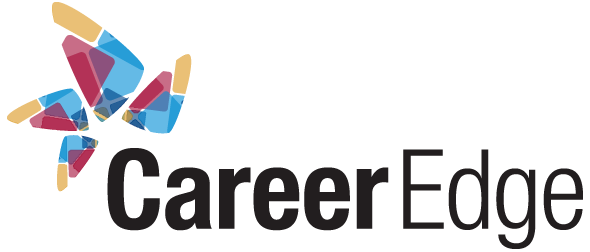
Hiring the right talent is one of the most important responsibilities a manager holds. An effective interview doesn’t just fill a role — it strengthens a team, shapes the company culture, and drives long-term business success. As a hiring manager, your ability to assess candidates thoroughly, fairly, and efficiently is crucial to making great hires. We have put together a complete guide for all hiring managers to use as a checklist before all interviews.
Picture this: you’ve posted a job opening, received a pile of promising resumes, and now it’s time for the interviews. If you’re like many hiring managers, especially those new to the role, you might be feeling a mix of excitement and anxiety. After all, hiring the right person can transform your team, while making the wrong choice can lead to months of challenges.
Don’t worry – you’re not alone in feeling this way. According to a 2023 survey by the Canadian HR Reporter, 68% of hiring managers reported feeling underprepared for conducting effective interviews. That’s exactly why we’ve created this comprehensive guide – to help you navigate the interview process with confidence and find that perfect candidate who will thrive in your organization.
In today’s competitive Canadian job market, where top talent is in high demand (Statistics Canada reports that certain sectors are experiencing up to 30% talent shortages), mastering the art of interviewing isn’t just helpful – it’s essential. But here’s the good news: becoming a skilled interviewer doesn’t require years of experience. With the right preparation, techniques, and mindset, you can conduct interviews that not only identify the best candidates but also leave everyone feeling positive about the experience.
So, whether you’re a first-time hiring manager or looking to refine your approach, this guide will walk you through everything you need to know to make your interview process effortless, professional, and successful. Let’s get started!
Pre-Interview Preparation: Setting Yourself Up for Success
Know the Role Inside and Out
Before you sit across from any candidate, you need to be intimately familiar with the position you’re filling. This might seem obvious, but it’s surprisingly common for interviewers to have only a surface-level understanding of the role.
Take time to:
- Review the job description thoroughly
- Identify the must-have skills versus nice-to-have qualifications
- Understand how this role contributes to your team’s goals
- Clarify what success looks like in the position
Sarah, a tech manager at a growing Vancouver startup, shares: “My biggest interview mistake was not fully understanding the daily responsibilities of a UX designer position I was hiring for. I ended up focusing too much on visual design skills and missed asking about user research experience, which was actually critical for the role. Now I always spend at least an hour with the department head clarifying exactly what skills are needed before I interview anyone.”
Create a Structured Interview Plan
Walking into an interview without a plan is like starting a road trip without a map. You might eventually reach your destination, but the journey will be inefficient and potentially frustrating.
Develop a clear interview structure that includes:
- A warm welcome and introduction (2-3 minutes)
- An overview of the company and position (5 minutes)
- Planned questions divided by skill areas (30-40 minutes)
- Time for candidate questions (10-15 minutes)
- Next steps and closing (2-3 minutes)
Having this structure ensures you cover all important areas and gives candidates a professional experience. It also helps you stay on track if the conversation starts to wander (which it often does!).
Prepare Your Questions Strategically
The questions you ask will determine the quality of information you receive. Rather than relying on generic questions you’ve heard others ask, develop targeted questions that reveal whether candidates truly have the skills and qualities needed for success.
Consider using a mix of these question types:
- Behavioral questions: “Tell me about a time when you had to meet a tight deadline with limited resources.”
- Situational questions: “If a customer came to you with an issue our product can’t solve, how would you handle it?”
- Technical questions: Specific to the knowledge required for the role
- Culture fit questions: “What type of work environment brings out your best performance?”
Remember to prepare follow-up questions that dig deeper into initial responses. These often reveal more than the original answers.
Understanding Canadian Employment Regulations
As a hiring manager in Canada, you need to be aware of legal considerations that impact the interview process. Violating these requirements, even unintentionally, can expose your organization to legal risks.
Human Rights Legislation
The Canadian Human Rights Act and provincial human rights codes prohibit discrimination based on protected grounds including:
- Age
- Gender identity and expression
- Sexual orientation
- Race, nationality, ethnic origin
- Religion
- Disability (physical or mental)
- Family or marital status
This means you should avoid questions that directly or indirectly relate to these areas. For example, instead of asking “Do you have children or plan to have children?” (which could be discriminatory), focus on job requirements: “This position sometimes requires evening and weekend work. Would that be a problem for you?”
The Ontario Human Rights Commission provides excellent resources for ensuring your interview process is compliant with human rights legislation.
Privacy Considerations
Under the Personal Information Protection and Electronic Documents Act (PIPEDA) and provincial privacy laws, you should:
- Only collect information necessary for evaluating job qualifications
- Inform candidates how their information will be used
- Secure candidate information appropriately
- Dispose of interview notes and candidate information when they’re no longer needed
Accessibility Requirements
The Accessible Canada Act and provincial accessibility legislation require employers to accommodate candidates with disabilities during the hiring process. This means:
- Ensuring interview locations are physically accessible
- Providing materials in accessible formats when requested
- Being open to reasonable accommodation requests
- Focusing on a candidate’s ability to perform essential job functions
Michael, an HR director in Toronto, shares: “We once had a candidate who was deaf apply for a programming position. We arranged for a sign language interpreter for the interview. The candidate turned out to be our top choice and has been an incredible asset to our team for three years now. Taking those small steps to accommodate her needs during the interview led us to a fantastic hire we might have missed otherwise.”
Conducting the Interview: Creating a Professional and Comfortable Experience
Making a Strong First Impression
The interview starts the moment the candidate arrives – actually, it starts even earlier with your communication leading up to the meeting. Remember that while you’re evaluating the candidate, they’re also evaluating your company.
To create a positive first impression:
- Send clear instructions about the interview location, timing, and what to expect
- Ensure reception staff are aware of the candidate’s arrival time
- Greet them promptly and warmly
- Offer water or coffee
- Start with light conversation to help them relax
“I always try to spend the first few minutes helping candidates feel comfortable,” says David, a department manager at a Calgary marketing firm. “I’ll chat about their commute or something light. I find when people are relaxed, I get a much better sense of who they really are and their true capabilities.”
Effective Questioning Techniques
How you ask questions is just as important as what you ask. These techniques can help you gather richer information:
The STAR Method: Encourage complete answers by prompting candidates to describe:
- Situation: What was the context?
- Task: What needed to be accomplished?
- Action: What did you specifically do?
- Result: What was the outcome?
Active Listening: Show you’re engaged by maintaining eye contact, nodding, and asking relevant follow-up questions. Resist the urge to interrupt or fill silences too quickly – pauses often lead to more thoughtful responses.
Clarify Vague Responses: If a candidate gives a general answer, politely ask for specifics: “That’s interesting. Could you walk me through exactly how you implemented that solution?”
Watch for “We” vs. “I”: When candidates consistently say “we did this” rather than explaining their personal contribution, follow up with: “What was your specific role in that project?”
Red Flags to Watch For
While keeping an open mind is important, certain behaviors might indicate potential issues:
- Negativity about previous employers or colleagues
- Inability to acknowledge mistakes or weaknesses
- Significant inconsistencies between resume claims and interview responses
- Poor preparation or knowledge about your company
- Evasive or overly rehearsed answers
Instead of immediately disqualifying candidates who display these behaviors, use them as opportunities to probe deeper. Sometimes what appears to be a red flag has a reasonable explanation.
Taking Effective Notes
Good note-taking during interviews is crucial, especially when you’re meeting multiple candidates. However, excessive writing can make candidates nervous and prevent you from maintaining engagement.
Try these note-taking strategies:
- Prepare a simple evaluation form in advance with key areas to assess
- Use abbreviations and short phrases rather than complete sentences
- Focus on capturing specific examples and direct quotes
- Set aside brief moments between question sections to complete notes
- Consider having a second interviewer whose primary role is note-taking
Assessing Candidates Fairly: Beyond First Impressions
Overcoming Unconscious Bias
We all have unconscious biases that can affect our hiring decisions without us realizing it. Common biases include:
- Similarity bias: Favoring candidates who are similar to us
- Halo/horn effect: Letting one positive or negative trait influence our overall assessment
- Confirmation bias: Seeking information that confirms our initial impression
- Recency bias: Giving more weight to candidates interviewed most recently
To minimize the impact of these biases:
- Use a consistent evaluation rubric for all candidates
- Involve multiple interviewers with diverse perspectives
- Take time between interviews to reflect on your assessments
- Consider implementing “blind” elements in early screening processes
“Our team started using a points-based evaluation system for certain skills and qualifications,” explains Jennifer, an operations manager in Edmonton. “It’s not perfect, but it’s helped us focus more on objective criteria rather than gut feelings, and our recent hires have been much more successful as a result.”
Evaluating Cultural Fit vs. Cultural Contribution
While assessing how candidates will fit into your team culture is important, be careful not to use “culture fit” as an excuse to hire people who simply think and act like existing team members.
Instead, consider cultural contribution – how a candidate’s unique perspectives and experiences might enhance your team culture. Ask:
- What new viewpoints could this person bring?
- How might their background help us see blind spots?
- Would their working style complement (not just mirror) our team’s dynamics?
This approach promotes diversity while still ensuring the candidate shares your organization’s core values and work ethic.
Special Interview Situations
Remote Interviews
With remote work arrangements becoming increasingly common in Canada, you may often conduct interviews via video conference. To make these effective:
- Test your technology in advance
- Send clear instructions for accessing the meeting
- Allow extra time for potential technical difficulties
- Look at the camera, not the screen, to create eye contact
- Consider how remote interviews might disadvantage candidates with limited technology access
Panel Interviews
If using a panel interview format:
- Limit the panel to 3-4 people to avoid overwhelming candidates
- Clearly define each interviewer’s role and questions in advance
- Introduce everyone with names and positions
- Have one person lead the interview to maintain flow
- Debrief as a group immediately after each interview
Second and Final Round Interviews
For candidates returning for additional interviews:
- Avoid repeating the same questions from earlier rounds
- Dive deeper into areas where you need more information
- Consider including different team members who would work with the person
- Be transparent about how close they are to the final decision
- Provide more detailed information about the role and company
Post-Interview Process: Sealing the Deal
Evaluating Candidates Consistently
After each interview, take time to complete your evaluation while impressions are fresh. Use your structured assessment form to rate the candidate on key criteria and add qualitative notes about strengths and concerns.
When comparing candidates:
- Review your notes and assessments side by side
- Focus on evidence rather than feelings
- Consider which strengths are most important for success in the role
- Discuss your assessments with other interviewers before making decisions
Providing a Positive Experience for All Candidates
Even candidates you don’t hire will form an impression of your company that they may share with others. To ensure a positive experience:
- Communicate next steps clearly at the end of each interview
- Follow through on promised timelines or provide updates if delays occur
- Personally call candidates who reached final rounds but weren’t selected
- Provide specific, constructive feedback when possible
Lisa, a retail manager in Montreal, shares: “I once interviewed a candidate who wasn’t quite right for the position but handled herself impressively. I took time to give her specific feedback after our decision. Six months later, a perfect role opened up, and I immediately thought of her. She joined our team and later told me she was so impressed with how we handled the rejection that she’d been hoping we’d call again.”
Making the Offer
When you’ve found your ideal candidate:
- Move quickly to avoid losing them to competitors
- Have a clear approval process for finalizing offers
- Call the candidate personally to express your enthusiasm
- Follow up promptly with a formal written offer
- Be prepared to answer detailed questions about benefits, start dates, and onboarding
Becoming a skilled interviewer doesn’t happen overnight. Each interview you conduct is an opportunity to refine your approach and learn something new about the process.
Consider keeping an “interview journal” where you note techniques that worked well and areas for improvement. Review this periodically to identify patterns and track your progress.
Remember that the goal isn’t just to fill a position – it’s to find someone who will thrive in the role, contribute to your team, and grow with your organization. With the techniques outlined in this guide, you’re well on your way to making interviews less stressful and more successful for everyone involved.
Don’t be afraid to put your own personality into the process. The most effective interviewers balance professionalism with authenticity, creating an environment where candidates can truly shine.
Happy hiring!
FAQ
Q: How long should an interview typically last?
Most effective interviews run between 45-60 minutes. This gives enough time to thoroughly assess the candidate without causing fatigue for either party. For technical or senior positions, you might schedule 90-minute sessions or multiple interviews with different team members. The key is to respect everyone’s time by staying focused and following your interview plan.
Q: What should I do if a candidate seems extremely nervous?
Nervousness is natural and doesn’t necessarily reflect how someone would perform on the job. If you notice a candidate is particularly anxious, try:
- Starting with simpler, confidence-building questions
- Acknowledging that interviews can be stressful
- Taking a more conversational approach
- Giving positive nonverbal cues (nodding, smiling)
- Offering a brief break if the person seems overwhelmed
Q: Is it okay to ask about salary expectations during the interview?
Yes, but timing matters. It’s generally best to save compensation discussions for later in the interview process, once both parties have established mutual interest. When you do discuss it, be prepared to share the position’s salary range to ensure you’re aligned. Under pay transparency legislation in several Canadian provinces, including Ontario’s Pay Transparency Act, employers are increasingly required to disclose salary ranges in job postings, making this conversation more straightforward.
Q: How can I tell if a candidate is being honest about their experience?
Look for detailed, specific examples that demonstrate claimed skills. When candidates describe past achievements, listen for nuanced explanations that include challenges faced and lessons learned – these details are difficult to fabricate. You can also verify claims by:
- Asking technical questions that someone with the claimed experience should be able to answer
- Requesting work samples when appropriate
- Thorough reference checking
- Using skills assessments for certain positions
Q: Should I provide interview questions to candidates in advance?
For standard behavioral and experience questions, surprising candidates doesn’t necessarily yield better insights. Providing general topic areas or even specific questions 24-48 hours before the interview can allow candidates to prepare thoughtful, relevant examples. However, for questions assessing problem-solving abilities or technical skills, it’s usually better not to share these in advance.
Q: How do I handle candidates who have employment gaps on their resume?
Approach this topic with sensitivity, as employment gaps can occur for many legitimate reasons including health issues, caregiving responsibilities, education, or economic downturns. Ask in a neutral, non-judgmental way: “I notice there’s a period between your roles at Company X and Company Y. Could you tell me about that time?” Focus on the candidate’s skills and readiness for the current role rather than dwelling on the gap itself.
Q: What’s the best way to check references effectively?
Reference checks are most valuable when you:
- Ask the candidate for direct supervisors rather than colleagues or friends
- Prepare specific questions related to the skills needed for your open position
- Move beyond verification of employment dates to behavior and performance questions
- Listen for hesitations or qualifiers in the reference’s responses
- Ask open-ended questions: “In what areas did you see the most growth during their time with you?”
Remember to comply with privacy regulations when conducting reference checks, getting candidate permission and only collecting necessary information.









